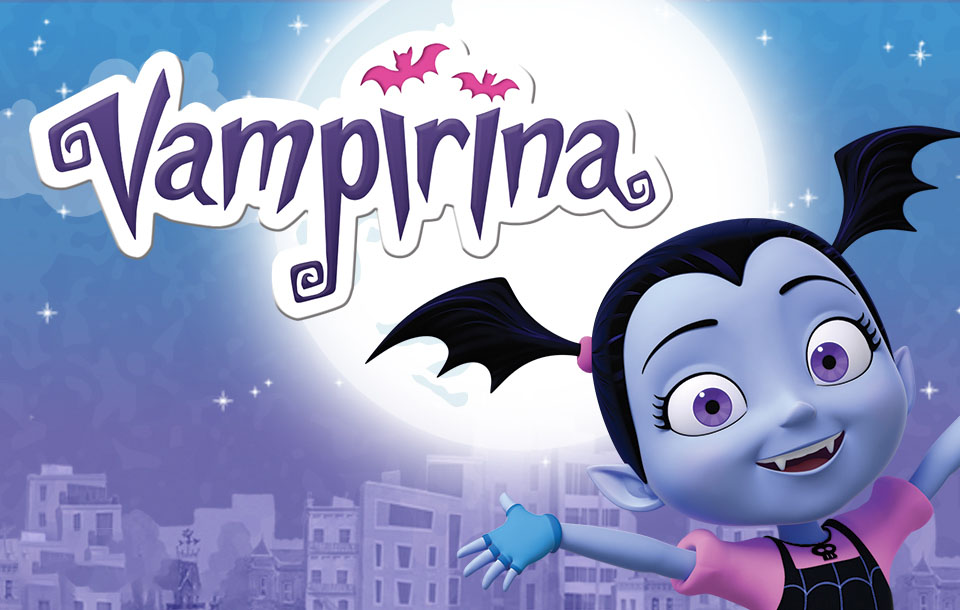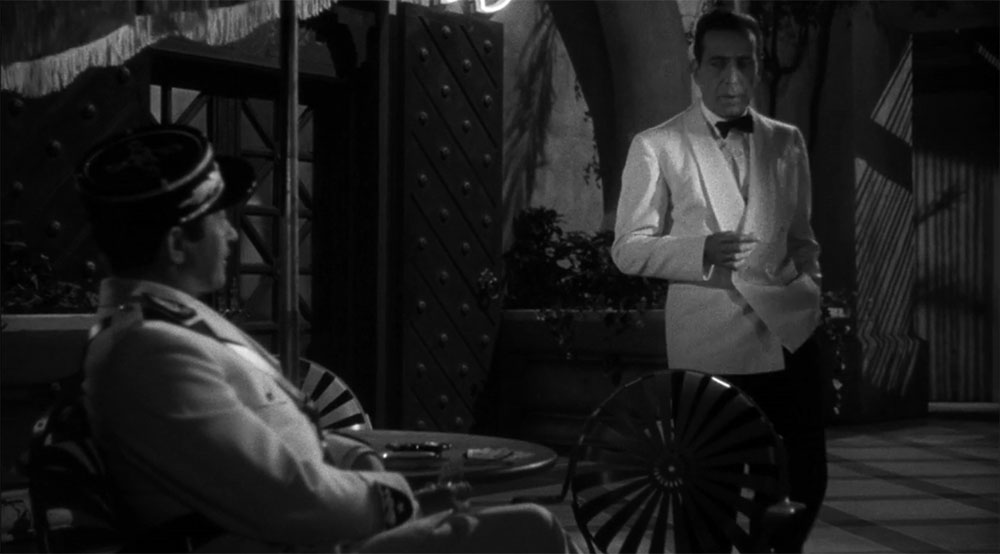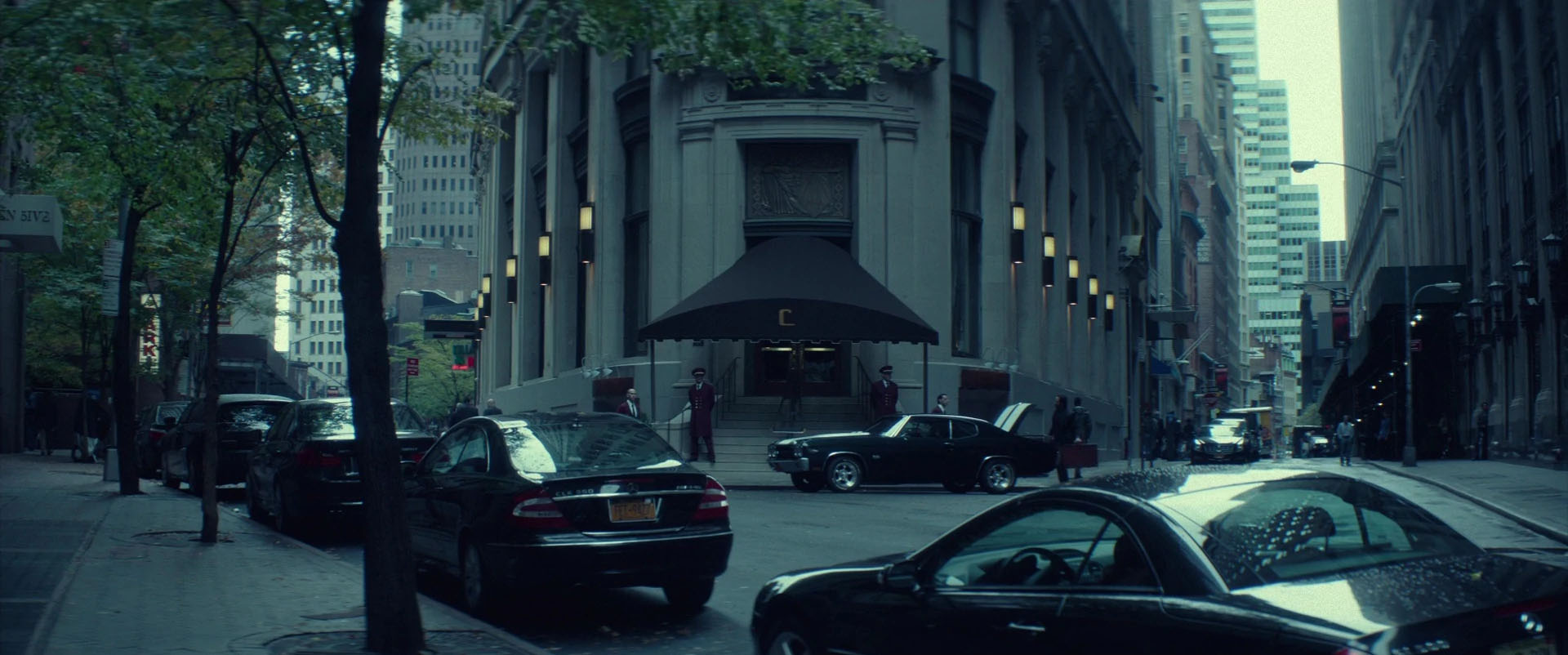
Rhodarin Press has published five supplements fleshing out Avernus, presenting a unique vision of the first layer of Hell. The first of these I stumbled across was Tyrants of the Purple City, a brief gazetteer describing an entire infernal city that lies somewhere along the Styx.
 TYRANTS OF THE PURPLE CITY: The city is primarily presented through a number of distinct factions, each of which has a barebones quest/job that they want accomplished. This is an interesting lens for viewing the setting, but seems very practical, resulting in a lot of bang for your buck in a relatively short supplement.
TYRANTS OF THE PURPLE CITY: The city is primarily presented through a number of distinct factions, each of which has a barebones quest/job that they want accomplished. This is an interesting lens for viewing the setting, but seems very practical, resulting in a lot of bang for your buck in a relatively short supplement.
The biggest shortcoming of Tyrants of the Purple City is the appalling proofreading. (Although the malapropism of “portuary ward” is almost delightfully evocative.) This is a problem which unfortunately persists throughout the Rhodarin supplements.
- Grade: B-
CHARON’S DROWNED SHRINE: Charon’s Drowned Shrine presents another Avernian city lying along the Styx, but this one was utterly destroyed in a flood forty years ago.
I will just never understand paragraphs like this:
Characters will most likely approach the city through the main course of the river. If they traverse the town to the Temple they should come across the districts in the order Outskirts, New Harbor, Eastern Gate, and then the Inner City, where the Temple resides, but through magic means or other strategies, they might be able to circumvent some wards.
First, there’s a map, so this is immediately obvious and the text is irrelevant. Second, stop trying to force non-linear environments into being linear, plotted experiences. Third, the phrase “if the 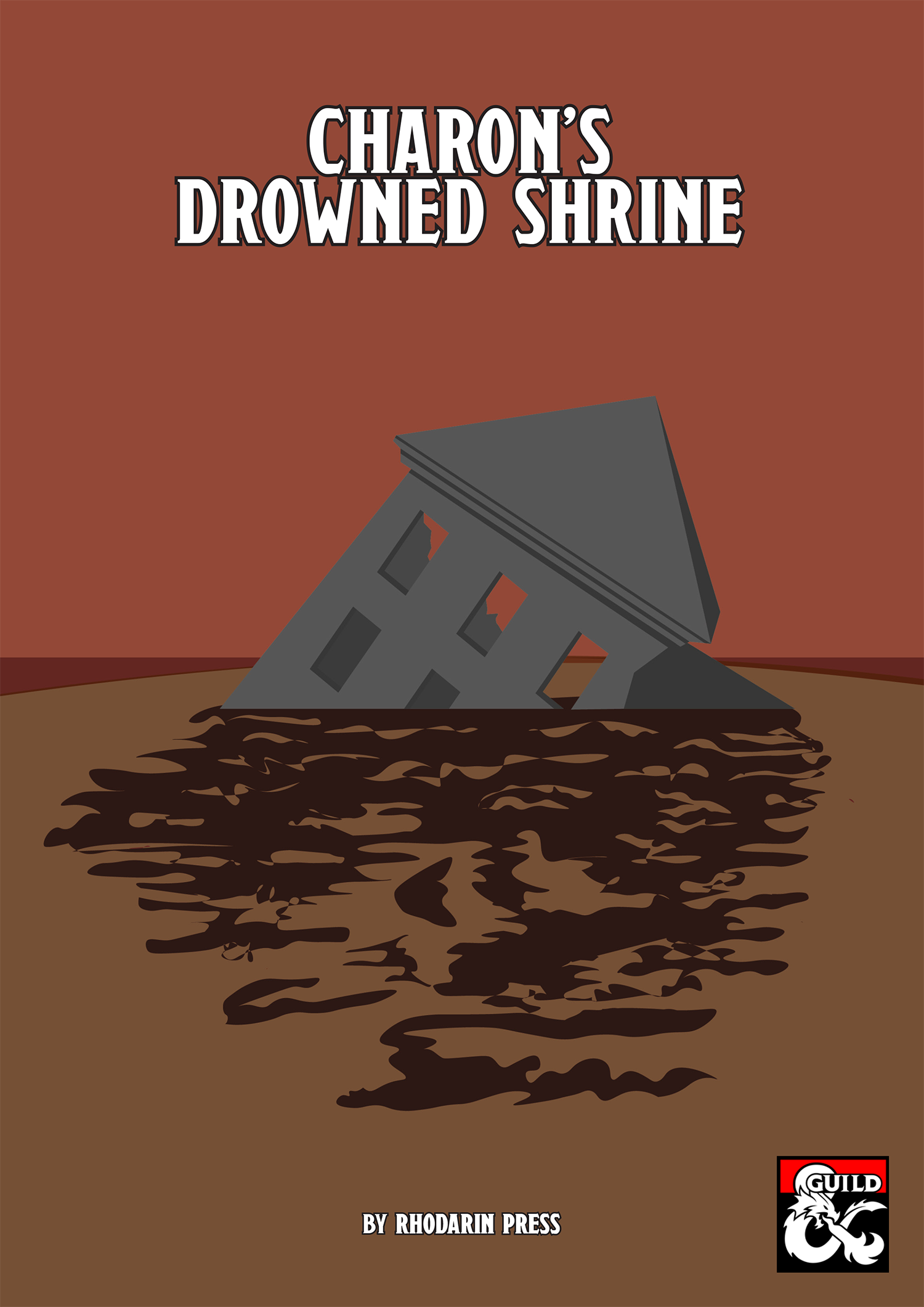 PCs figure out how to do something, then they can do something” seems to be the #1 favorite way for RPG authors to write “I feel a need to write something, but have absolutely nothing to actually say.”
PCs figure out how to do something, then they can do something” seems to be the #1 favorite way for RPG authors to write “I feel a need to write something, but have absolutely nothing to actually say.”
With that grumpy pet peeve out of the way, the biggest problem Charon’s Drowned Shrine has is that Orinxis, the ruined city, is… mundane. Absurdly so given that it is a CITY IN HELL ITSELF.
For example, the first keyed location is the Old Water Mill. Oooh… A mill churned by the cursed waters of the Styx itself! What alien and infernal purpose could it have been built for?
Grinding flour.
In similar fashion, the adventure just kind of blithely assumes that the PCs will be casually wading (and even diving!) into the waters of the Styx. The whole thing just feels like an adventure designed for the Material Plane that has been awkwardly copy-pasted to Avernus.
This one just doesn’t do it for me.
- Grade: D
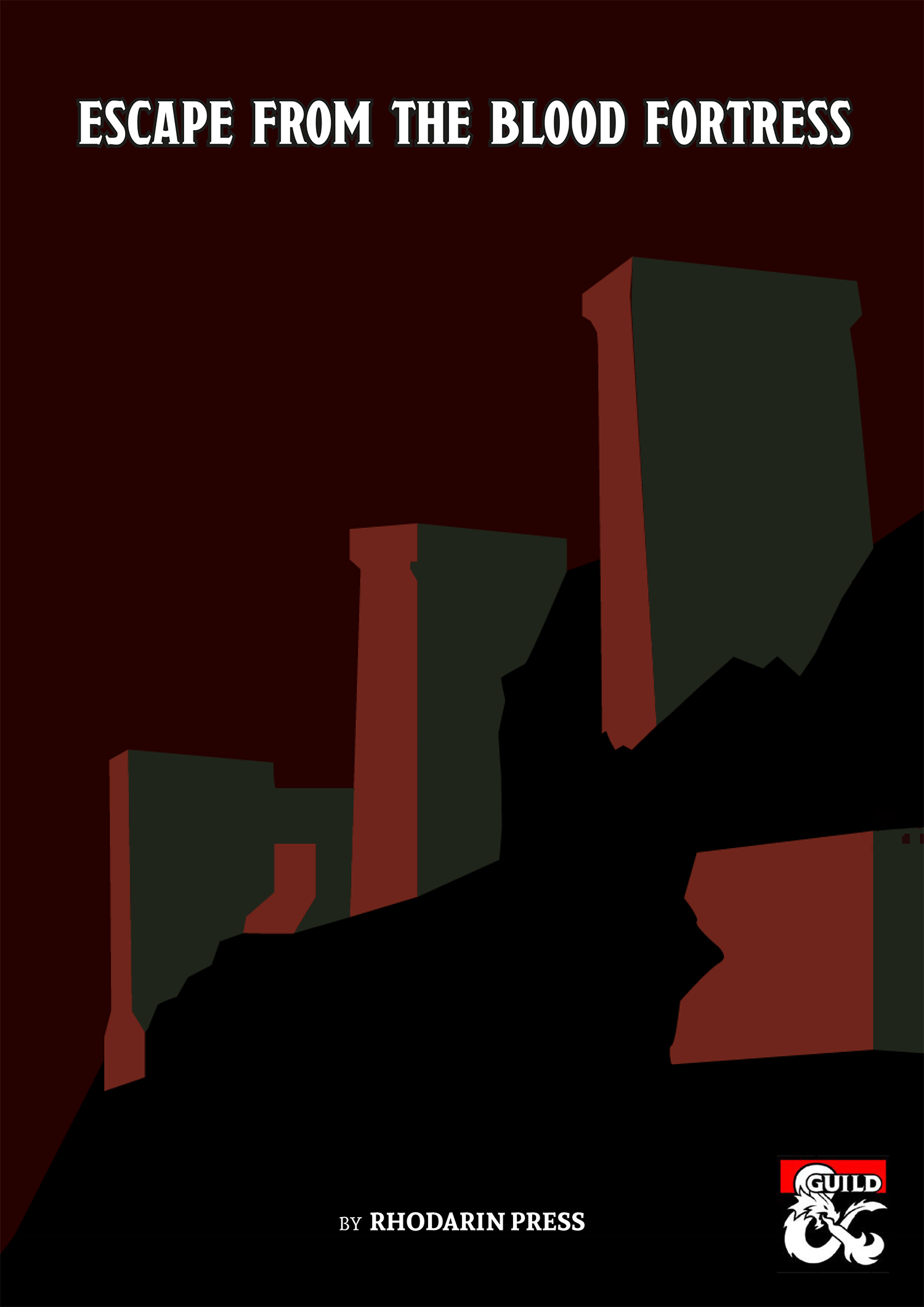 ESCAPE FROM THE BLOOD FORTRESS: Originally written as a one-shot that could also be potentially used as part of a longer campaign to bring the PCs to Avernus for the first time (by having them kidnapped and then locked in an infernal prison from which they must escape), the author has hypothetically retrofitted Escape from the Blood Fortress to be used as part of a Descent Into Avernus campaign (although, as far as I can tell, no actual effort has been put towards achieving this goal).
ESCAPE FROM THE BLOOD FORTRESS: Originally written as a one-shot that could also be potentially used as part of a longer campaign to bring the PCs to Avernus for the first time (by having them kidnapped and then locked in an infernal prison from which they must escape), the author has hypothetically retrofitted Escape from the Blood Fortress to be used as part of a Descent Into Avernus campaign (although, as far as I can tell, no actual effort has been put towards achieving this goal).
The dungeon from which the PCs are escaping is painfully linear, which is made worse because options ARE given.. it just turns out they’re designed to murder you if you’re stupid enough to take them. For example:
Exiting through this exit is highly inadvisable, as it would probably mean a very complex encounter and almost certainly incarceration or death.
So go back to the Preapproved Exit™ you dummies.
Other design problems include encounters which are… vague. For example:
The denizens of this kitchen are mainly imps and quasits following the orders of Jakll, a blind and very old tiefling (non-combatant) with excellent cooking skills.
How many imps? How many quasits? No idea.
The aforementioned “gonna kill you dummies for picking the wrong door” encounter is similarly undefined. There’s just, like, so many devils out there!
Eventually the PCs follow the linear dungeon up high enough that they can look out a different window and see a huge cut-scene play out which is, despite them having no agency in it whatsoever, the “climactic moment in the adventure.” Oddly, the adventure then continues.
This one is a miss for me, too.
- Grade: F
 THE ADMIRAL’S SUCCESS – A GUIDE ON SAILING THE STYX: This supplement consists of two parts. First, a set of alternative mechanics for handling exposure to the Styx designed to moderate the consequences of doing so.
THE ADMIRAL’S SUCCESS – A GUIDE ON SAILING THE STYX: This supplement consists of two parts. First, a set of alternative mechanics for handling exposure to the Styx designed to moderate the consequences of doing so.
Second, ten scripted random encounters designed for groups traveling along the Styx. These encounters are mostly serviceable, but also fairly pedestrian.
Unfortunately, several of them once again suffer from the “I forgot to put combat stats in this combat encounter” problem seen in Escape From Blood Fortress, which is fairly crippling in a product pretty much exclusively designed to provide ready-to-use encounters.
- Grade: D
VYSIANTER’S GUIDE TO THE RED WASTES OF AVERNUS: This is an example of what I mean when I talk about GMs lacking scenario structures. The author’s concept here is a blasted swath of Avernian wilderness called the Red Wastes, but the only scenario structure he knows is “linear plot.” And so the trackless waste through which the PCs are supposed to “roam” is presented as… a road.
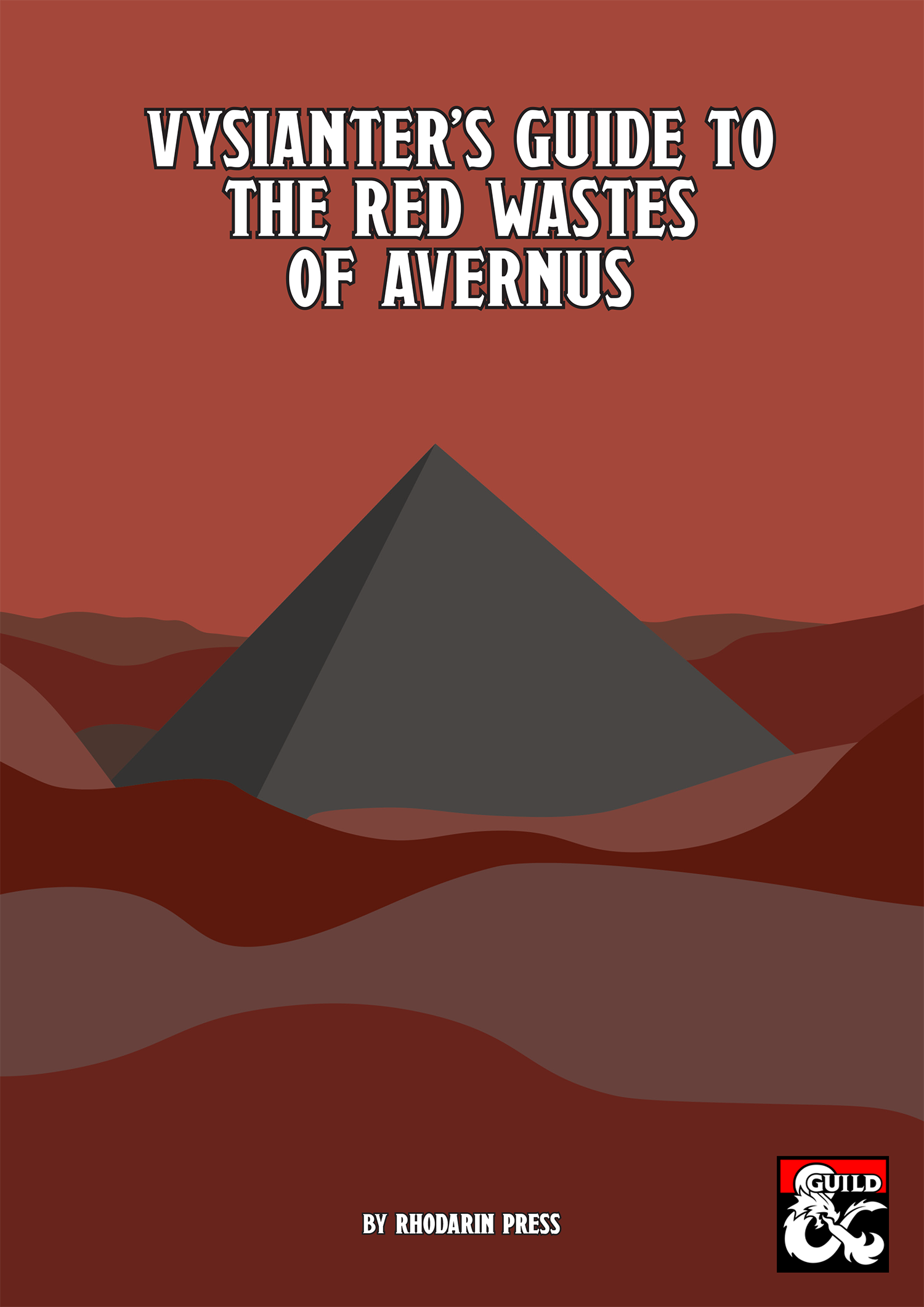 With a sequence of programmed encounters that play out as the PCs walk down the road.
With a sequence of programmed encounters that play out as the PCs walk down the road.
Once again, several of these encounters are vague, with some basically consisting of the author saying, “Here’s an idea for an encounter that might work. Maybe. I dunno.”
The typos also remain on point with this one, producing “bad-reliefs” and a temple to “Armodeus” (who I’m assuming is Asmodeus’ n’er-do-well cousin who’s also a frat boy).
The book is rounded out with the Lost Temple of Dak-Thrael. This dungeon is very atmospheric and evocatively packed with a ton of lore about the Queen of Lilies (who once ruled over the verdant paradise which preceded the Red Wastes). I find the key to be a little muddy – with boxed text that violates the “don’t tell the players what their characters are doing” rule and a presentation primarily based on theorizing about things the PCs might do (instead of just clearly describing the room so that I can run the game) – but it’s serviceable.
If you’re looking to add a little enigma to your version of Avernus – a reminder that its history stretches back through countless aeons beyond human comprehension and its wastes are filled with the lost palimpsest of unknowable epochs – Vysianter’s Guide to the Red Wastes might be worth snagging for Dak-Thrael alone (to which I’d give a grade of C-).
- Grade: D+
After stumbling into Tyrants of the Purple City and being pleasantly surprised, I was really excited to discover that Rhodarin Press had done a whole slate of Avernus-focused supplements. Unfortunately, I was pretty consistently disappointed by the rest of the line. With that being said, I see a lot of potential here, and will be keeping an eye on Rhodarin in the future to see how they develop.
One last thing to note, which may not have been immediately clear from the above, is that all of Rhodarin’s Avernus products are loosely bound together, forming a shared continuity. Each book stands on its own, but they’re also designed to work with each other.

